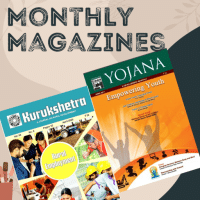Current Affairs Exam > Current Affairs Questions > Most abundant tissues of our body area)muscul...
Start Learning for Free
Most abundant tissues of our body are
- a)muscular
- b)connective
- c)epithelial
- d)nervous
Correct answer is option 'B'. Can you explain this answer?
Most Upvoted Answer
Most abundant tissues of our body area)muscularb)connectivec)epithelia...
Understanding the Abundance of Connective Tissues
Connective tissues play a crucial role in the structure and function of the body. Here’s a detailed explanation of why they are considered the most abundant tissues.
Types of Connective Tissues
- Loose Connective Tissue: This is the most common type, providing support and elasticity. It fills spaces between organs and tissues.
- Dense Connective Tissue: This includes tendons and ligaments, which provide strength and stability.
- Adipose Tissue: Stores energy in the form of fat and cushions organs.
- Bone: A rigid form of connective tissue that provides structure and support.
- Blood: Often overlooked, blood is a fluid connective tissue essential for transport and immune functions.
Functions of Connective Tissues
- Support: Connective tissues provide structural support to organs and the body as a whole.
- Protection: They protect vital organs, such as the heart and lungs, and help in the immune response.
- Transportation: Blood, as a connective tissue, transports nutrients, gases, and waste products throughout the body.
- Storage: Adipose tissue stores energy and helps maintain body temperature.
Prevalence in the Body
- Diverse and Ubiquitous: Connective tissues are found throughout the body, making up a significant portion of total body mass.
- Composition: They consist of a variety of cells, fibers, and ground substance, which contribute to their abundance and functional versatility.
In summary, connective tissues are indeed the most abundant tissues in our body due to their diverse forms and critical roles in support, protection, and transportation, making option 'B' the correct answer.
Connective tissues play a crucial role in the structure and function of the body. Here’s a detailed explanation of why they are considered the most abundant tissues.
Types of Connective Tissues
- Loose Connective Tissue: This is the most common type, providing support and elasticity. It fills spaces between organs and tissues.
- Dense Connective Tissue: This includes tendons and ligaments, which provide strength and stability.
- Adipose Tissue: Stores energy in the form of fat and cushions organs.
- Bone: A rigid form of connective tissue that provides structure and support.
- Blood: Often overlooked, blood is a fluid connective tissue essential for transport and immune functions.
Functions of Connective Tissues
- Support: Connective tissues provide structural support to organs and the body as a whole.
- Protection: They protect vital organs, such as the heart and lungs, and help in the immune response.
- Transportation: Blood, as a connective tissue, transports nutrients, gases, and waste products throughout the body.
- Storage: Adipose tissue stores energy and helps maintain body temperature.
Prevalence in the Body
- Diverse and Ubiquitous: Connective tissues are found throughout the body, making up a significant portion of total body mass.
- Composition: They consist of a variety of cells, fibers, and ground substance, which contribute to their abundance and functional versatility.
In summary, connective tissues are indeed the most abundant tissues in our body due to their diverse forms and critical roles in support, protection, and transportation, making option 'B' the correct answer.
Free Test
FREE
| Start Free Test |
Community Answer
Most abundant tissues of our body area)muscularb)connectivec)epithelia...
Connective tissue is the most abundant, widely distributed, and varied type. It includes fibrous tissues, fat, cartilage, bone, bone marrow, and blood. ... The most abundant fiber in connective tissues is a tough protein called collagen.

|
Explore Courses for Current Affairs exam
|

|
Similar Current Affairs Doubts
Most abundant tissues of our body area)muscularb)connectivec)epitheliald)nervousCorrect answer is option 'B'. Can you explain this answer?
Question Description
Most abundant tissues of our body area)muscularb)connectivec)epitheliald)nervousCorrect answer is option 'B'. Can you explain this answer? for Current Affairs 2025 is part of Current Affairs preparation. The Question and answers have been prepared according to the Current Affairs exam syllabus. Information about Most abundant tissues of our body area)muscularb)connectivec)epitheliald)nervousCorrect answer is option 'B'. Can you explain this answer? covers all topics & solutions for Current Affairs 2025 Exam. Find important definitions, questions, meanings, examples, exercises and tests below for Most abundant tissues of our body area)muscularb)connectivec)epitheliald)nervousCorrect answer is option 'B'. Can you explain this answer?.
Most abundant tissues of our body area)muscularb)connectivec)epitheliald)nervousCorrect answer is option 'B'. Can you explain this answer? for Current Affairs 2025 is part of Current Affairs preparation. The Question and answers have been prepared according to the Current Affairs exam syllabus. Information about Most abundant tissues of our body area)muscularb)connectivec)epitheliald)nervousCorrect answer is option 'B'. Can you explain this answer? covers all topics & solutions for Current Affairs 2025 Exam. Find important definitions, questions, meanings, examples, exercises and tests below for Most abundant tissues of our body area)muscularb)connectivec)epitheliald)nervousCorrect answer is option 'B'. Can you explain this answer?.
Solutions for Most abundant tissues of our body area)muscularb)connectivec)epitheliald)nervousCorrect answer is option 'B'. Can you explain this answer? in English & in Hindi are available as part of our courses for Current Affairs.
Download more important topics, notes, lectures and mock test series for Current Affairs Exam by signing up for free.
Here you can find the meaning of Most abundant tissues of our body area)muscularb)connectivec)epitheliald)nervousCorrect answer is option 'B'. Can you explain this answer? defined & explained in the simplest way possible. Besides giving the explanation of
Most abundant tissues of our body area)muscularb)connectivec)epitheliald)nervousCorrect answer is option 'B'. Can you explain this answer?, a detailed solution for Most abundant tissues of our body area)muscularb)connectivec)epitheliald)nervousCorrect answer is option 'B'. Can you explain this answer? has been provided alongside types of Most abundant tissues of our body area)muscularb)connectivec)epitheliald)nervousCorrect answer is option 'B'. Can you explain this answer? theory, EduRev gives you an
ample number of questions to practice Most abundant tissues of our body area)muscularb)connectivec)epitheliald)nervousCorrect answer is option 'B'. Can you explain this answer? tests, examples and also practice Current Affairs tests.

|
Explore Courses for Current Affairs exam
|

|
Signup for Free!
Signup to see your scores go up within 7 days! Learn & Practice with 1000+ FREE Notes, Videos & Tests.
























